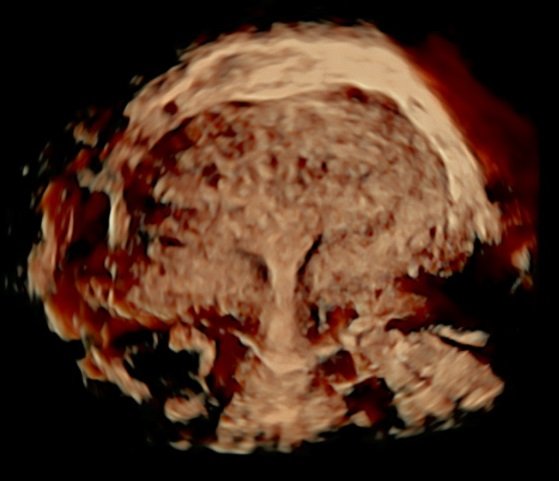
Adenomyosis and recurrent implantation failure
Adenomyosis occurs when the tissue that lines the inner part of the uterus (the endometrium) is found in the outermost part of the uterus (myometrium), which is a muscle layer. It is sometimes referred to as endometriosis of the uterus, given that endometrial tissue is found where it should not be, just like it happens in endometriosis.
Until recently, the knowledge we had about endometriosis was close to non-existent, except for those patients who had had their uterus removed and close examination had yielded this finding. Even so, its connection with heavy bleeding and pain during menstruation was well known, and also with uterus enlargement as a result of such abnormal bleeding.
Our knowledge of this pathology has blossomed over the last five years, when, thanks to the advances achieved in ultrasound scanning, gynaecologists have been able to diagnose it. Until then, this condition could only be suspected when performing a magnetic resonance or examining the uterus directly. It is very interesting to see on 3D ultrasound scans the endometrial cavity and the myometrium look as if they had merged into one and see the inner part of the endometrium reach out to the outer part.
Yet, its highly suspect connection with endometriosis, a pathology that is much better known and is closely related to infertility, made it possible a long time ago to consider a likely connection with the difficulty to become pregnant. In addition, a connection with bad results after an assisted reproduction treatment has been suggested.
Today, in view of the effects caused by adenomyosis in the uterus, it has been proved that there is a great mismatch between what we see and what patients feel. In other words, we may see a badly affected uterus that is even deformed by adenomyosis without causing any symptoms in the patient, or quite the opposite: noticing only some minor signs in a patient with severe symptoms. It seems that a uterus that can cause very severe symptoms may likewise have a difficult embryo implantation and, as a consequence, cause an infertility that is difficult to cure by means of an infertility treatment.
Numerous research studies have suggested a connection with recurrent embryo implantation failure, but this could not be confirmed because of the lack of consistence in diagnosis of adenomyosis. However, it is clear that diagnosis of adenomyosis is of special interest to patients suffering from implantation failure (more than 4 good quality embryos transferred without achieving pregnancy), since directed and specific treatment of this pathology can improve the results of reproduction treatments.
At our implantation failure unit, we have developed specific treatments for these situations. We have also made special effort to identify them both by ultrasound and hysteroscopy.
Dr. Belén Moliner, gynaecologist at Instituto Bernabeu
